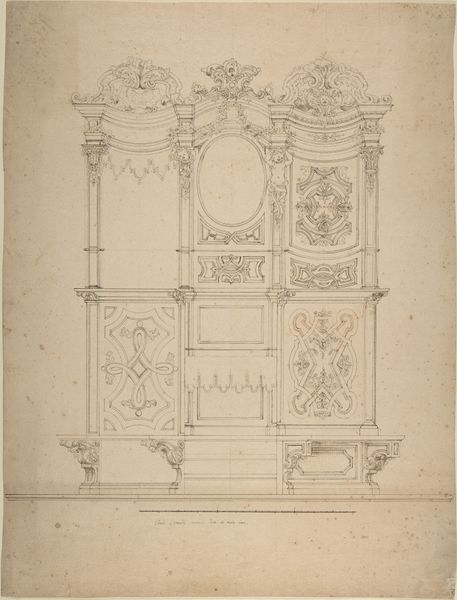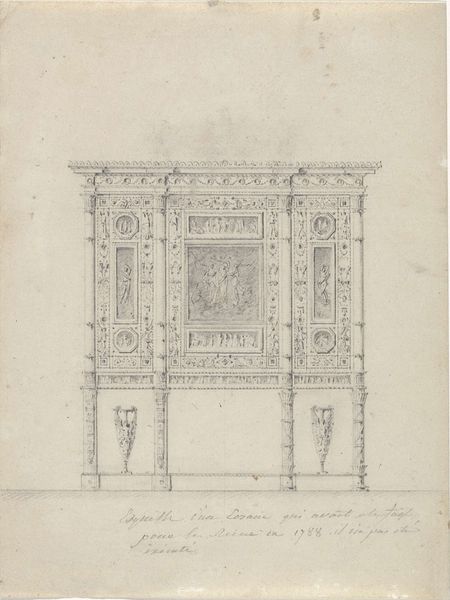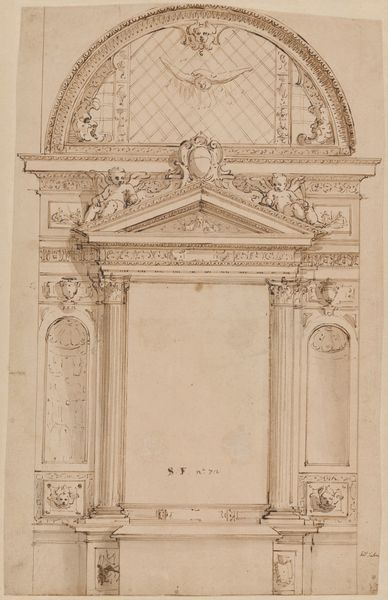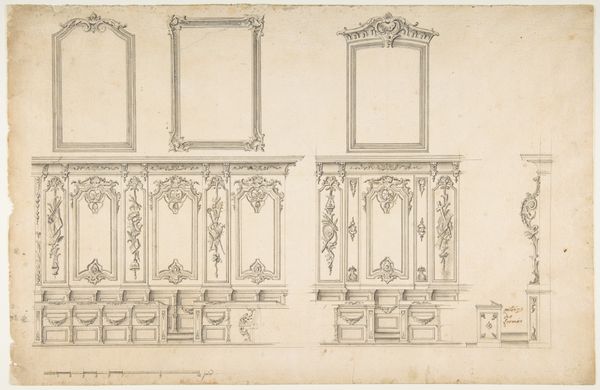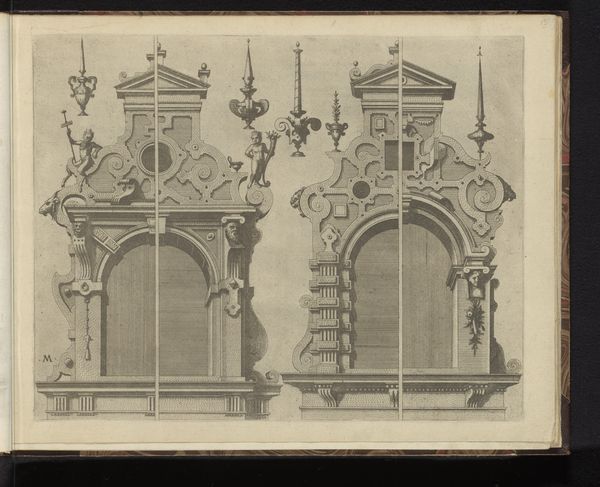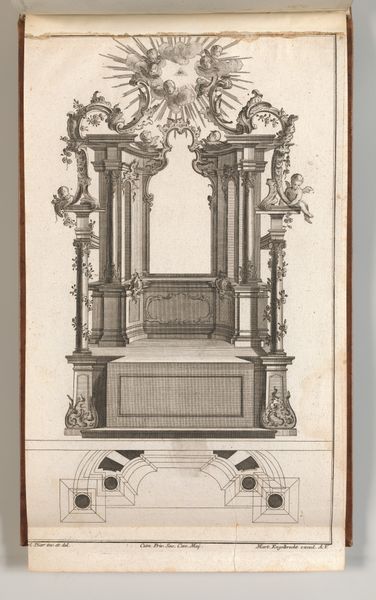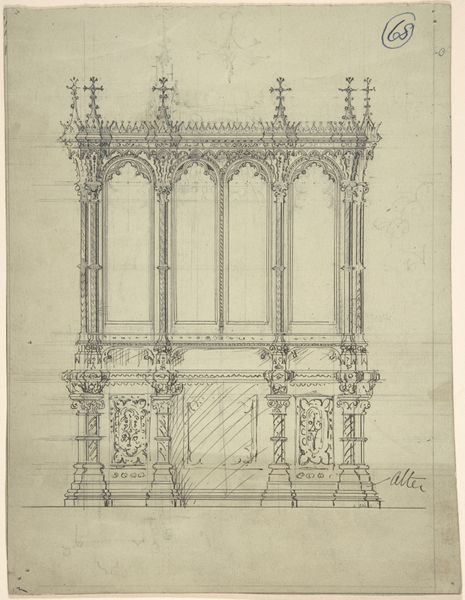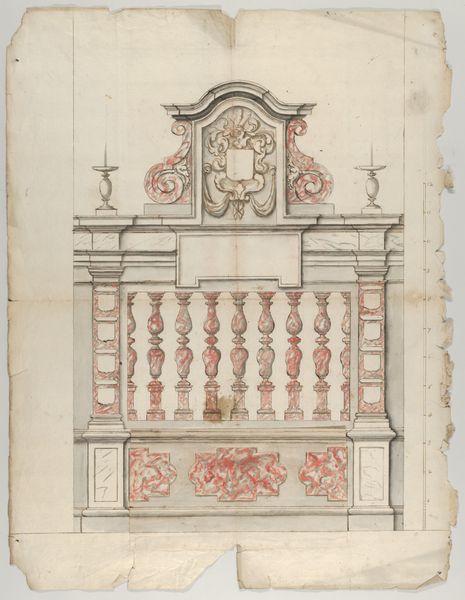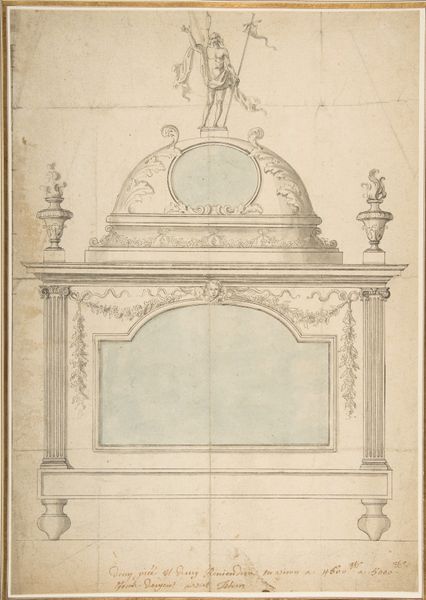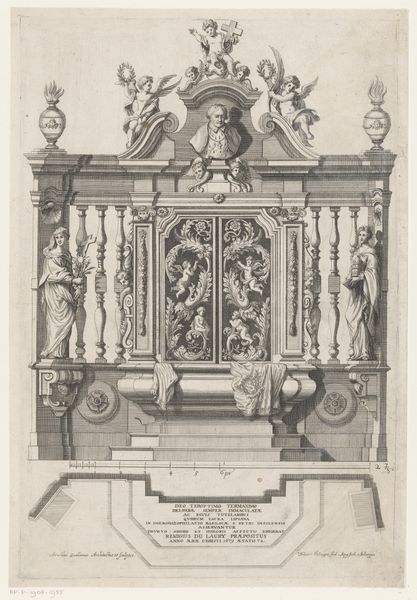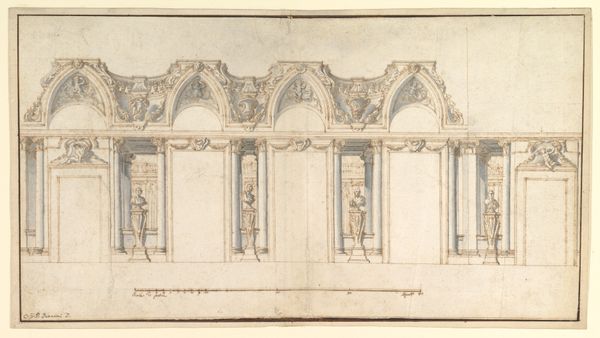
Design for a Cabinet with an Alternative for the Right Side 1730 - 1760
0:00
0:00
drawing, print, architecture
#
drawing
#
baroque
# print
#
etching
#
geometric
#
decorative-art
#
architecture
Dimensions: 14 x 8 7/8 in. (35.6 x 22.6 cm)
Copyright: Public Domain
Curator: Here we have a work titled "Design for a Cabinet with an Alternative for the Right Side." This drawing, rendered through etching, dates back to somewhere between 1730 and 1760. Editor: Immediately, the ornate details grab you, right? All those swirling lines… it feels very decadent. It practically shouts 'Baroque excess' to me, which, of course, makes me wonder, who would've actually owned something like this? Curator: Good question! That is central to the decorative art styles prominent at the time. We should also note that it comes to us anonymously. This design would likely be presented to someone wealthy—royalty or the aristocracy—and altered based on preference. This very drawing shows a proposed alternative for its right side, so design choices were malleable. Editor: That's so interesting! It's easy to see how a cabinet like this becomes a symbol of power and status. Who had the wealth to commission this? To dictate its very design? It represents social and economic disparity in a tangible way. The level of geometric and abstract complexity suggests someone eager to show off their influence. Curator: Exactly, and the fact that it’s a design gives insight into art's commercial life at the time. Craftspeople relied on commissions and creating elaborate designs, and you get this great blending of art and architecture that shapes everyday life and also, these historical power structures. Editor: I do wonder what would go inside. What type of personal items needed such elaborate protection? We see it's beauty, yes, but how was it an accomplice in daily acts of class expression and even subjugation? How might have labor practices connected with its fabrication further impacted specific populations? Curator: That pushes us beyond aesthetic analysis. It challenges us to think critically about the role that seemingly harmless objects play in a complex history. Thanks for pushing our listeners to remember those implications. Editor: Agreed. I hope it made us consider how design isn’t ever *just* design. It embodies complex power relations.
Comments
No comments
Be the first to comment and join the conversation on the ultimate creative platform.
